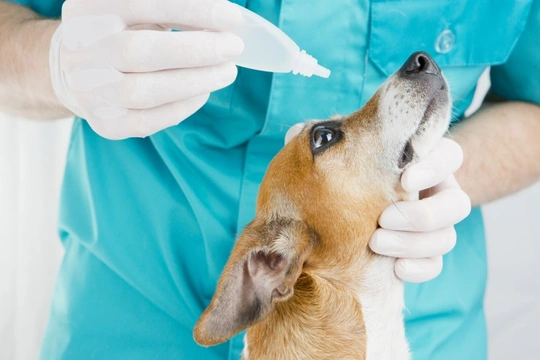
All about the British Veterinary Association’s Eye Scheme for dogs
When it comes to hereditary health problems in dogs, the eyes are one of the most commonly affected areas, and there are a significant number of different health conditions that can be passed down from parent dogs to their offspring that affect the eyes.
In order to try to reduce future incidences of preventable chronic hereditary eye conditions in dogs, The Kennel Club, in association with the British Veterinary Association and the International Sheep Dog Society run an eye scheme that allows dog breeders to have the eyes of their breeding stock tested to make sure that they have good, healthy eyes before they are permitted to breed.
In this article, we will look at the full remit of the scheme in more detail, including what it entails and how to go about getting your own dog tested. Read on to learn more.
How does the eye scheme work?
The BVA/KC/ISDS eye scheme is designed to give dog breeders the option of testing their breeding stock for hereditary eye conditions that could be passed onto their offspring, so that they can make an informed decision on whether or not to breed from them.
The scheme does not actually tell breeders whether or not they can or should breed from their dogs, but instead provides them with as much information as possible to allow them to make an informed decision of their own.
Anyone can have their dog examined for eye problems as part of the scheme, but certain breeds of dog that appear on The Kennel Club’s Schedule A list (a list of breeds that have a high hereditary predisposition to certain problems, to the point that The Kennel Club tracks and monitors statistics for said breeds) have their results sent to The Kennel Club to be included in their breed records supplements.
Testing is usually performed in the first instance when the dog in question is under one year old, and then it is generally advised that the dog be re-tested on an annual basis.
What sort of dogs should be tested under the eye scheme?
As mentioned, any dog can be tested, but dogs of breeds that fall under The Kennel Club’s Schedule A should be tested, and additionally, dogs that fall under Schedule B (Schedule B reflects dog breeds for whom the incidence rate of genetic eye problems is currently under examination) should ideally be tested prior to breeding too.
To find out if your dog is on the Schedule A list, you can check here, and for Schedule B, check here.
What conditions does the scheme check for?
The eye scheme currently checks for the markers of twelve different hereditary eye conditions in dogs, including Collie Eye Anomaly, hereditary cataracts, primary lens luxation, generalised progressive retinal atrophy, and primary open-angle glaucoma. Exactly which tests are performed may vary from breed to breed, based on their risk factors. The scheme also seeks to identify other eye conditions that are becoming prevalent across certain breeds and that may be hereditary in nature, and so the full remit of the scheme is expanding all the time.
How is the eye test performed?
In order to have your dog’s eyes tested, you will need to take them along to a specially certified vet that is registered to perform it-it cannot be performed in your local clinic (unless of course they happen to be an accredited test centre). You can find a full, up to date list of specialists that can perform the test for you on the BVA’s website.
When you take your dog along for their test, you will also need to take along your dog’s Kennel Club or International Sheep Dog Society registration documents, along with the results of any previous eye tests that your dog has had, if relevant.
All dogs tested should also be microchipped with up to date details of their registered keeper, and if no microchip is present, your dog will be refused testing.
The test itself involves your dog being examined by a veterinary ophthalmologist, using a range of the necessary equipment to test things like your dog’s vision, eye pressure and other factors. In some cases, they may also need to use drops to help to dilate the pupil to get a proper look into the retina, and it can take up to half an hour for these drops to take effect, and so you may have to wait a while if this is the case.
What happens to the results?
The specialist that performs the test for you will give you the results immediately afterwards, along with a copy of the certificate of the results too.
The certificate is clear and simple to interpret-it consists of a list of the conditions that were tested for, each of which will be notated as either affected or unaffected.
As well as your own copy of the certificate, a copy will be sent to The Kennel Club for their own records, and another sent to your own vet.
If you do not agree with the results of the test or you feel that there might have been an error, it is possible to appeal to the BVA in writing. You must appeal within 30 days of testing, and the appeal will require you to take your dog along to a different examiner (which incurs a second fee) who will then perform their own impartial examination.
If the second examiner’s results tally with that of the first one, the appeal is terminated and the results will stand. However, if the second examiner’s results do not tally with the first set, the dog will need to be examined for a third time by a Chief Panellist (there is no additional fee for this third test) and this result is deemed to be binding.
To find out more about the scheme and the current test fees, have a look at The Kennel Club’s Eye Scheme Information Page.



